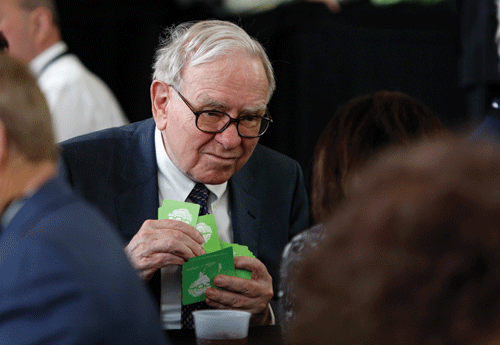- In the first quarter of 2008, the five listed banks on the Beirut Stock Exchange (Bank Audi, BLOM Bank, Byblos Bank, Bank of Beirut and Bank BEMO) recorded a year-on-year average percentage change in aggregate profits of 24.1 percent.
- Notably, Bank of Beirut (BoB) witnessed a 50.5 percent increase in profits in the first quarter of 2008, reaching $13.53 million.
- From the first quarter of 2007 to that of 2008, the five banks’ average increase in total assets was 19.4 percent, illustrating healthy growth in each of the banks throughout the year.
- Bank Audi reported the highest climb in total assets in the first quarter of 2008, totaling $17.55 billion, a 27.3 percent increase from the first quarter of 2007.
- Customer loans amongst the listed banks increased, on average, 44 percent. Bank Audi and BLOM witnessed the most significant climbs in loans, with 60.8 and 50.7 percent respectively.
- Deposits enjoyed a healthy year-on-year growth in the first quarter of 2008, averaging an 18.7 percent
 increase.
increase.
Results of listed banks for first quarter of 2008

* Year on Year
(1) Customer loans and deposits
Source: Byblos Bank Economic Research and Analysis Department
- By the end of 2008, the net profits of the five listed banks on the Beirut Stock Exchange totaled $823 million, meaning earnings rose by 23 percent from the end of 2007, when total profits were $667 million. This increase is due to an overall growth in deposits, as Lebanese banks were seen as safe havens for depositors from both residents and non-residents of Lebanon.
- According to Byblos Bank’s Economic Research & Analysis Department, the “average net profits of the five banks increased by 22.6 percent in 2008, constituting a slowdown from the average net profit growth of 34.5 percent in the first three quarters
 of 2008 and from the average net profit growth of 43 percent posted in the first half of 2008.”
of 2008 and from the average net profit growth of 43 percent posted in the first half of 2008.” - Bank Audi witnessed the largest surge in deposits of 21.9 percent year-on-year, totaling $17.1 billion by the end of 2008.
Results of listed banks for 2008

* Year on Year
(1) Customer loans and deposits
Source: Byblos Bank Economic Research and Analysis Department
- From the end of 2008 to the first quarter of 2009, customer deposits increased in all five listed banks, averaging a 4.44 percent increase. This shows the healthy capital inflow continuing to pour into domestic banks.
- Growth in lending has slowed down in the first quarter of 2009. According to analysts, the global slowdown is affecting demand for credit this year; there is an especially marked decrease in demand for loans to non-resident Lebanese abroad whose projects were financed by Lebanese banks. Of the top three banks, Bank Audi witnessed a 2 percent decrease from the end of 2008 in customer loans, whilst Byblos reported a decrease of 1.2 percent in
 customer loans. BLOM was the only bank to see a slight increase in loans, reaching 0.6 percent growth.
customer loans. BLOM was the only bank to see a slight increase in loans, reaching 0.6 percent growth.
Results of listed banks for first quarter of 2009

* Year-on-year
**Change from end-2008
(1) Customers loans and deposits
Source: Byblos Bank Economic Research and Analysis Department
- By the end of 2008, total commercial bank deposits reached $78.7 billion, a near 16 percent increase from the $68 billion total recorded in 2007.
- Deposits in commercial banks and the central bank are — so far — growing faster this year than last, mainly because banks are investing less liquidity abroad where interest rates are lower. Thus, domestic banks prefer to place their funds internally at higher return rates.
- Total deposit growth amongst the five listed banks on the Beirut Stock Exchange grew by 15 percent in the first quarter of 2009.
- Due to global economic circumstances, swelling unemployment rates and, in particular,
 the considerable slowdown in the Gulf Cooperation Council economies, deposits are expected to slow by the end of 2009, yet still achieve positive, robust figures.
the considerable slowdown in the Gulf Cooperation Council economies, deposits are expected to slow by the end of 2009, yet still achieve positive, robust figures.
Commercial banks deposits ($ billions)

Source: Banque du Liban
- At the end of 2008, the consolidated assets to liabilities of commercial banks operating in Lebanon totaled $94.3 billion (142 billion Lebanese lira). This is an increase of 14.6 percent from the end of 2007, when the aggregate assets/liabilities of commercial banks in Lebanon was $82.6 billion (nearly 124 billion Lebanese lira), a 10.7 percent year-on-year increase at the time.
- Due to the large size of the banking sector compared to the size of the Lebanese economy — with 52 commercial bank (including four Islamic banks) and abundant liquidity, local banks have the capability to expand beyond local borders. Many domestic banks continued regional expansion schemes throughout 2008, and plan to do the same for the whole of 2009.
Total assets/liabilities of commercial banks operating in Lebanon (End of period – Billion LBP)

Source: Banque du Liban








